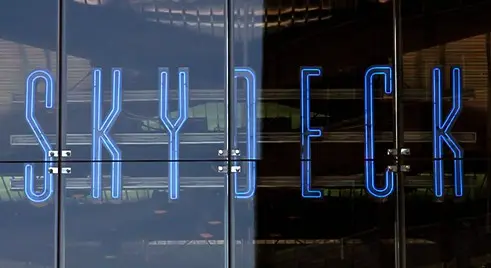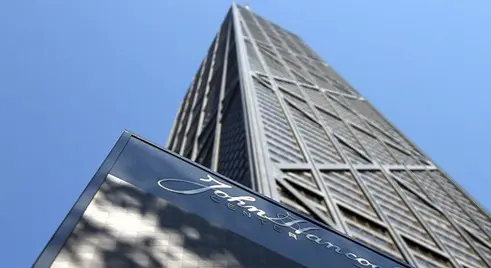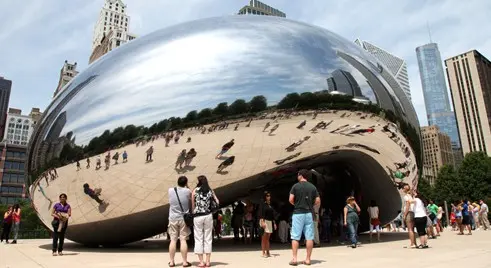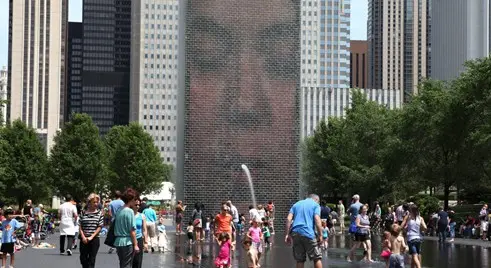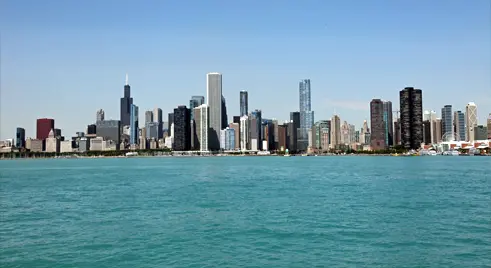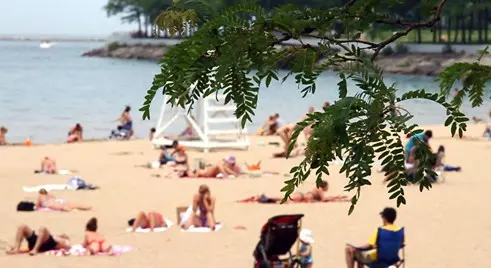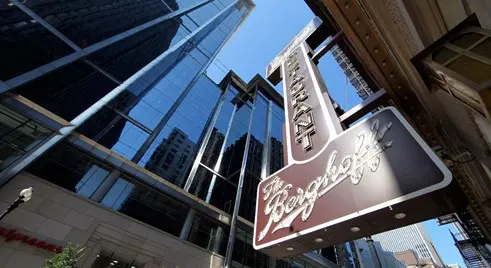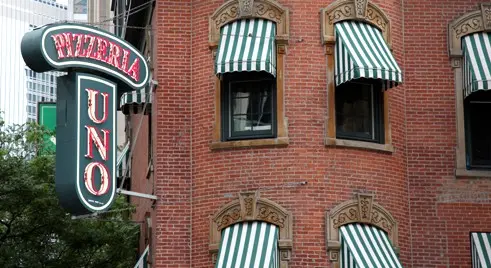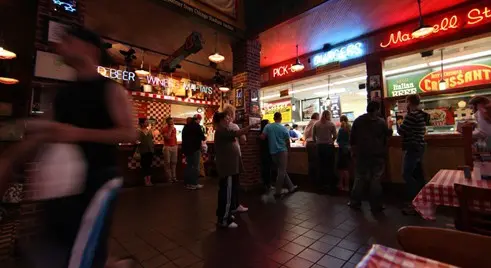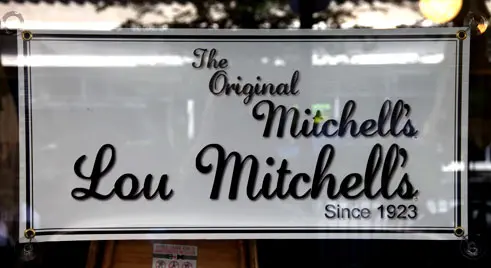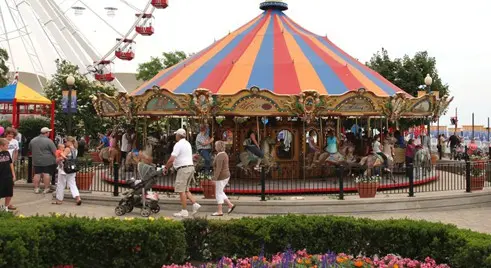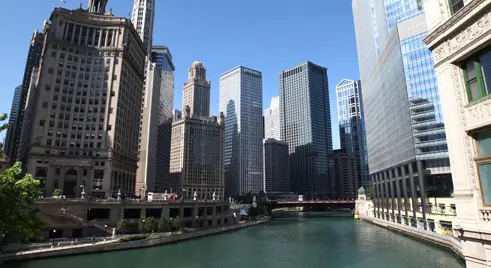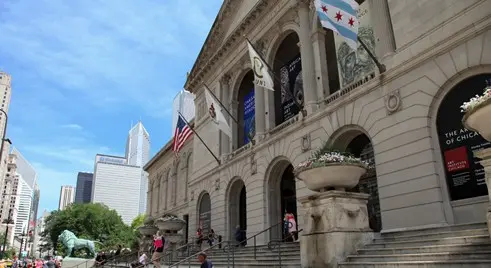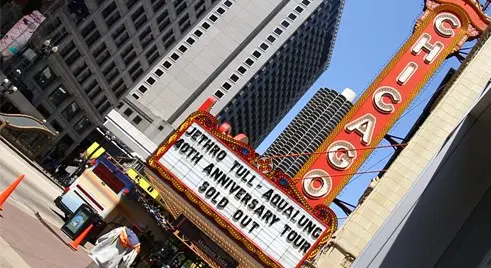Chicago, a city of skyscrapers
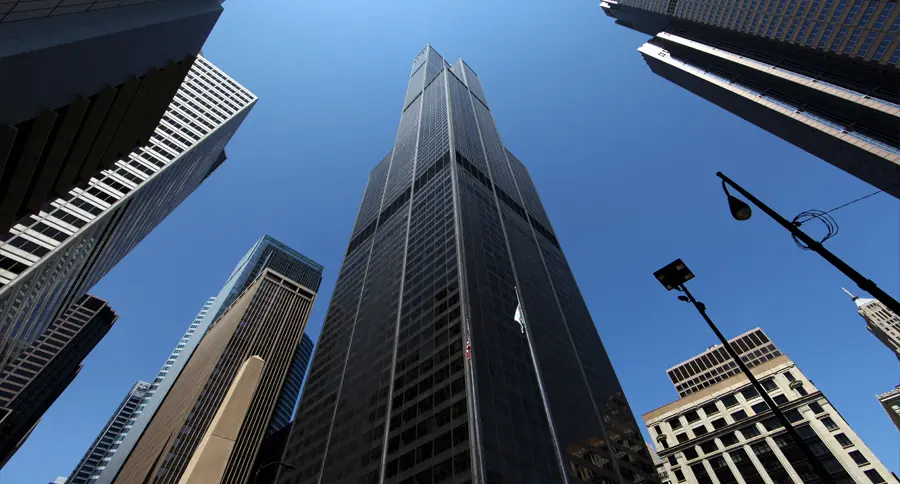
Chicago is at the crossroads of contemporary architectural trends, a favorite playground for designers who have long sought to touch the sky and break records. For many years, the city was home to the world's tallest skyscraper, the Willis Tower. The city's skyline is dominated by some of the world's ten tallest buildings: Trump Tower and the John Hancock Center, whose observatory offers the best photographic view of Chicago's skyscrapers.
Skydeck, Willis Tower
On the 103rd floor of the Willis Tower, 1352 feet above the ground, the Skydeck is the city's most unusual attraction. Four glass cabins jut out of the building and, glazed all the way to the ground, give the impression of floating in space.
Hancock Observatory
The observatory at the John Hancock Center, 1150 feet above the ground, offers one of the best panoramic views of the city, according to one Chicagoan. On a clear day, you can see more than 60 miles beyond the borders of Illinois.
Chicago, a city of art
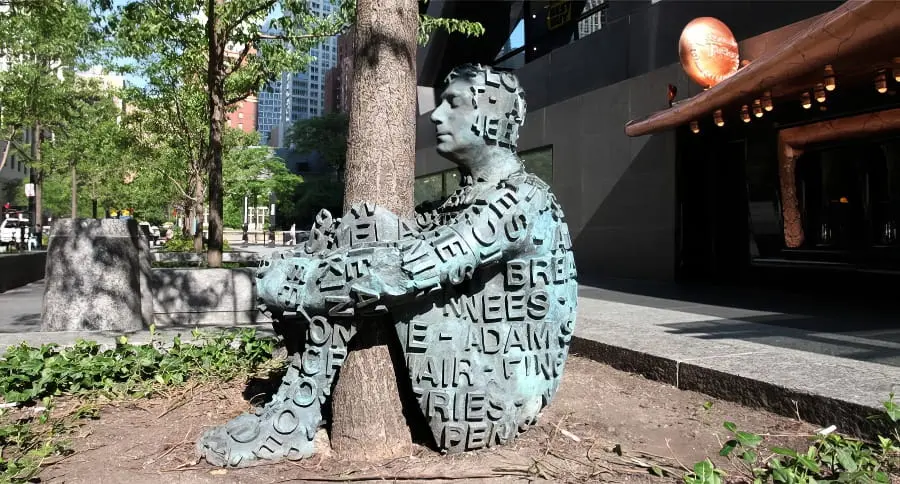
Chicago is an open-air art gallery, a pioneer of the "public art" movement that scatters astonishing installations along streets, squares, and parkways.
Initiated by the monumental sculpture "The Picasso," Chicago-style public art has spread to the city's subway stations and parks: Grant Park and adjacent Millennium Park are cultural hubs, as is the Art Institute of Chicago, one of the nation's two largest museums, and the Jay Pritzker Pavilion, a bold outdoor concert hall. Public art is presented free of charge in the open air, and in keeping with the movement's philosophy, visitors are invited to interact: photograph themselves in the distorted reflections of "The Bean" (The Cloud Gate) or play in the water jets of the Crown Fountain.
Cloud Gate
Millennium Park is no slouch when it comes to monumental works of art that are open to the public. The Cloud Gate, designed by Anish Kapoor, is a giant mirror, here in the form of a nearly 100-ton bean, that offers spectacular reflections of the city.
Crown Fountain
This amazing fountain consists of two 15-meter blocks facing each other, with their feet in a barely submerged granite basin. Huge close-ups of Chicagoans' faces are projected onto them. Water seems to pour out of their mouths.
Chicago, a city by the lake
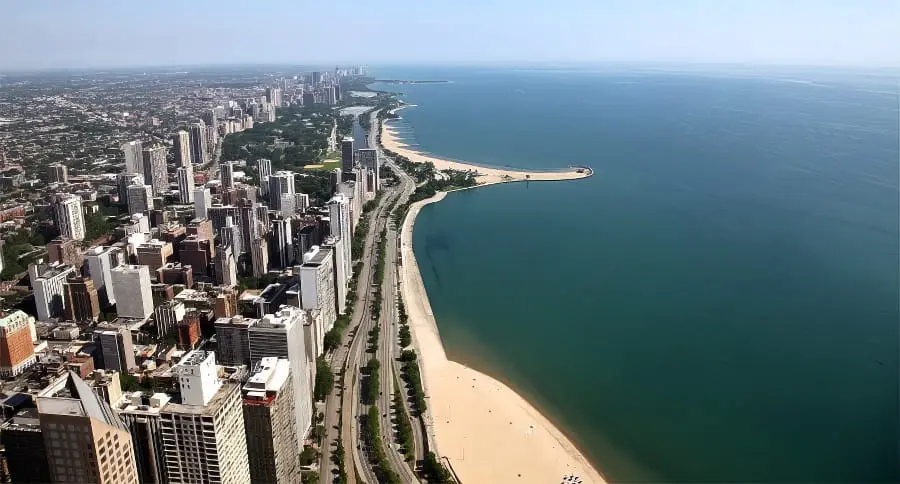
On the shores of the gigantic Lake Michigan, the fifth largest lake in the world, Chicago unfurls its thirty or so sandy beaches. At the foot of the skyscrapers, the largest city in Illinois and the third largest metropolitan area in the United States offers a seaside feeling, with the cold waters of Lake Michigan stretching as far as the eye can see, beyond the horizon.
Lake Michigan
More than 300 miles long, 120 miles wide: Lake Michigan is one of the five largest lakes in the world and the largest lake entirely within the United States. Along its shores, 1,400 miles of shoreline.
Chicago beaches
Chicago's beaches are so numerous that the region is nicknamed the "Third Coast" of the United States. 33 beaches occupy the shores of Lake Michigan, most of them covered with that amazing "singing sand" that sings underfoot.
Chicago, a gourmet city

Chicago invented the Chicago-style hot dog, the "healthiest" of all hot dogs, said to be overflowing with greens and absolutely forbidden with ketchup! You can enjoy it, for example, at Portillo's Hot Dog and his movie set.
And it's in the shelter of Pizzeria Uno that Ike Sewell creates the "deep-dish pizza", or Chicago-style pizza. A pizza with thicker dough and more generous toppings, served in its own baking dish, in a noisy setting with small wooden tables arranged along a long, weathered bar.
The Berghoff
This is probably the oldest restaurant in town. It serves German specialties.
Pizzeria Uno Chicago
The inventor of Chicago-style pizza continues to serve his historic pizza in downtown Chicago.
Portillo's Hot Dog
In a movie theater setting, the Chicago dog is served the old-fashioned way.
Lou Mitchell's
At the beginning of Route 66, Lou Mitchell's has been welcoming travelers since the 1920s.
The Birthplace of Route 66
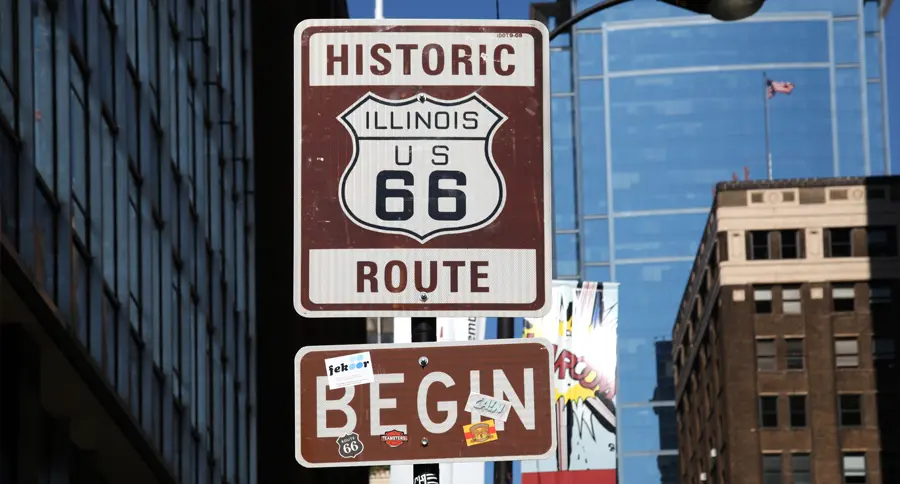
Route 66, the legendary American road and the world's first transcontinental highway, begins here in Chicago. Or stops, depending on how you follow it. It officially begins a few long steps from the harbor behind the Art Institute of Chicago.
Emblematic of Route 66's heyday, Lou Mitchell's Restaurant is often considered the starting point for 66ers, who have always stopped here for a hearty breakfast before hitting the Mother of All Roads. The Buckingham Fountain in Grant Park is also a symbol. The now defunct Route 66 stretched nearly 3,000 miles from Chicago, Illinois to Los Angeles, California.
The Chicago "L" ("elevated")
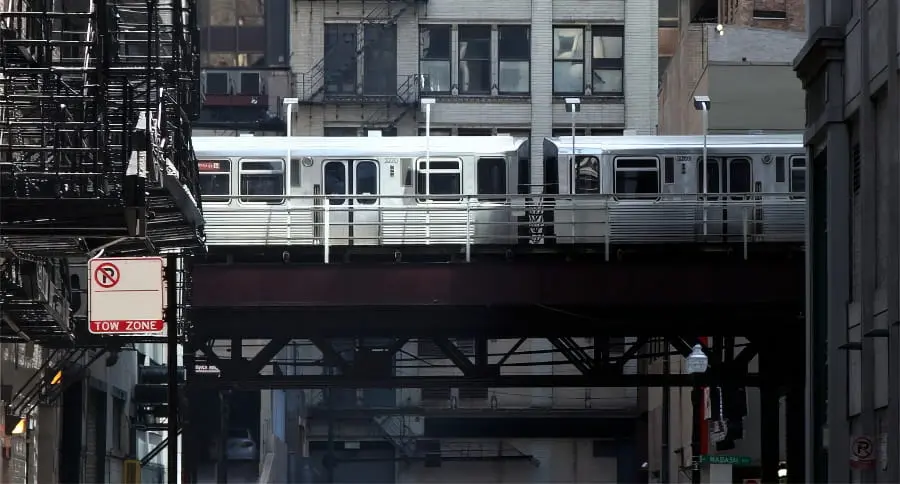
Chicago's subway system is one of the city's icons, appearing in movies, television and newspapers. Around downtown, it forms a loop nicknamed the "L" ("Elevated"), which occupies an elevated route on impressive metal structures. Beyond the tourist center, the subway goes underground, providing a vital link between downtown and the residential suburbs of Chicago's "Chicagoland" metropolitan area.
Shopping in Chicago
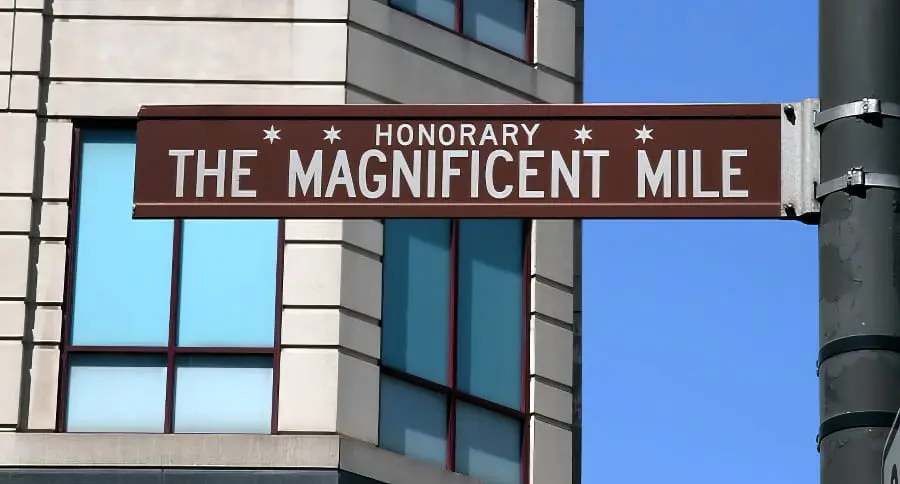
In downtown Chicago, the Magnificent Mile is home to the city's most luxurious boutiques, restaurants and hotels. But also more affordable shops. A true shopping temple, Water Tower Place is Chicago's largest mall. About 100 stores are spread over 8 levels. Located in one of the ten tallest buildings in the city (262 meters, 74 floors), it's open every day.
Chicago Attractions
Navy Pier
Navy Pier is Chicago's most popular attraction for those who love a good time. The pier, which juts out into Lake Michigan, offers food, drinks, souvenirs, concerts and more. It's also the starting point for several themed cruises, mostly architecture-related, as well as diner cruises. A very romantic ride to the end of the quay on the Ferris wheel, which skims the skyscrapers. Best at dusk, when the sun sets behind the concrete giants and fireworks explode over the waters of Lake Michigan.
Chicago River
This broad river flows from Lake Michigan to the Mississippi. But that wasn't always the case, as the flow was reversed in the 19th century for commercial reasons. In downtown Chicago, the river grazes some of the world's most iconic skyscrapers and welcomes pedestrians and terraces along its River Walk. Its waters, spanned by every bridge on the planet, are ideal for themed cruises, especially those that focus on architecture. It's even possible to go kayaking.
Art Institute of Chicago
The Art Institute of Chicago, located on the edge of Grant Park, is the second largest and one of the oldest art museums in the United States. It boasts one of the world's most renowned collections of Impressionist and Post-Impressionist art. Its walls feature such legendary paintings as George Seurat's "Un dimanche après-midi à l'Île de la Grande Jatte" and Grant Wood's "American Gothic," one of the most reproduced and parodied paintings in history.
Chicago Theater
This theater is a marvel, called the "Wonder Theater of the World" when it opened at the beginning of the twentieth century. To enter, you'll need a ticket to one of the musicals, concerts, shows and plays that are programmed here throughout the year. The sign over the building's entrance, seen in movies and on television, is a true icon of Chicago and even the United States, and a must-see!
Windy City
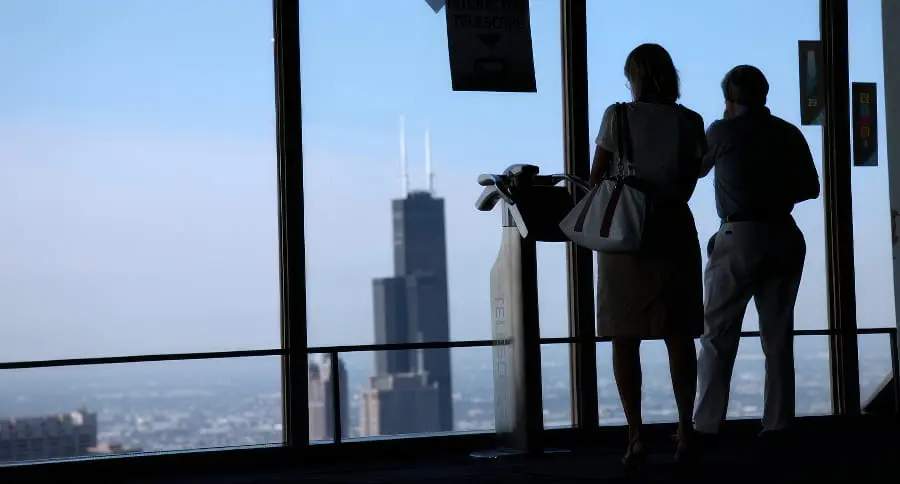
In Chicago, gusts sweep through the streets at the base of some of the tallest skyscrapers on the continent and in the world. In winter, the wind turns frigid, blowing in from the icy plains of the Arctic before rushing through the corridors formed by the tall buildings. It has inspired the city's nickname, "Windy City.

